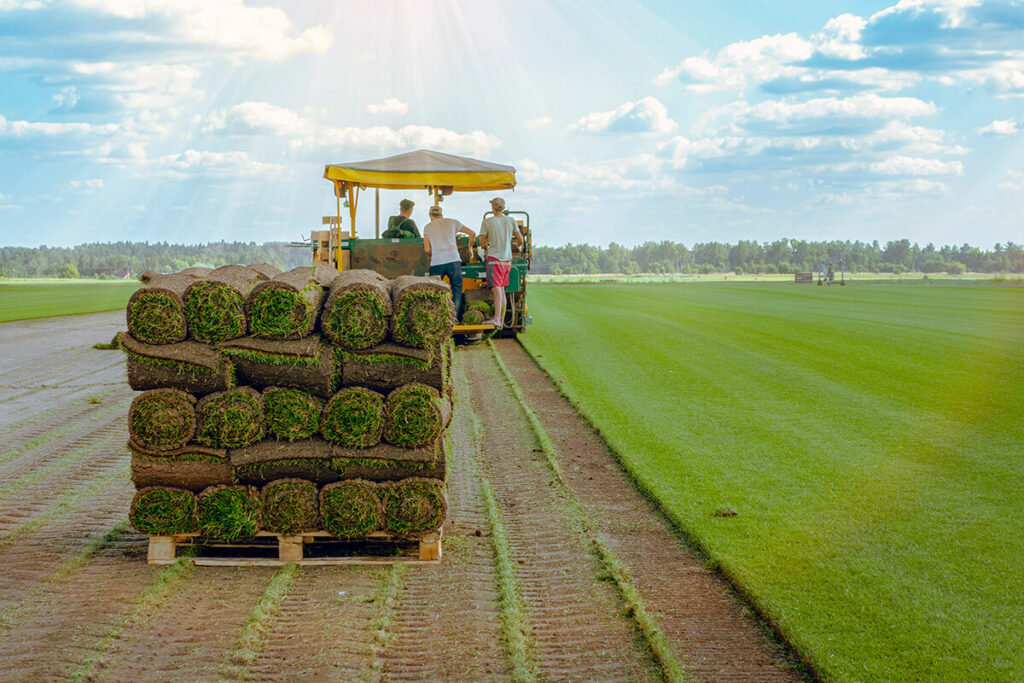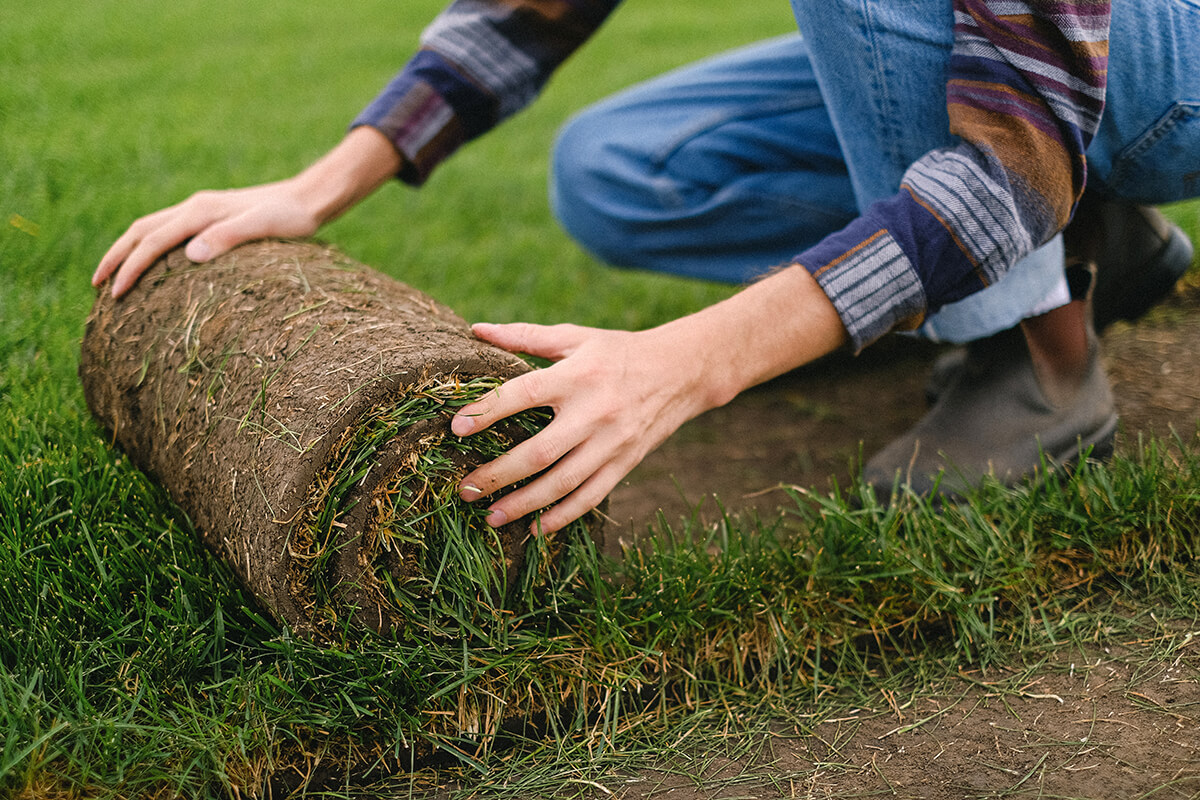Preparing Your Soil for Sod In The Midwest
March 1, 2024
Category, Lawn Care

Preparing Your Soil for Sod In The Midwest
Fescue sod creates a beautiful lawn at your Midwest residential or commercial property, but sod needs the right circumstances to flourish. Other than the quality of the sod itself, the health of your soil is probably the most important factor for whether fescue sod will establish properly on your lawn. Prepping your lawn for sod includes soil testing and amendments.
Get a free quote on professional sod installation in the Midwest.
Importance of Soil Testing
Since fescue sod is installed directly on top of the soil, the soil itself must be healthy enough to support the immediate needs of your lawn. Our sod installation service area in the Midwest has unique weather patterns and circumstances that can affect soil health, so it’s crucial to test for some key factors so they can be considered when planning lawn prep for sod installation.
Soil nutrient levels
Healthy soil contains many nutrients such as calcium, zinc, nitrogen, magnesium, potassium, manganese, and phosphorus. Each of these nutrients performs special functions in soil health, so it’s crucial to know if your soil is lacking in any of them.
Soil pH
In the Midwest, factors like heavy rainfall and the use of certain pesticides and fertilizers can cause soil pH to drop below 6, which is considered acidic. A pH of 7.5 or above is considered alkaline. The ideal pH for fescue sod is between 6 and 7, which is a neutral pH. It’s important to know the pH of your soil so you can add the necessary nutrients to make it healthy enough to support a thriving lawn.
Organic matter in soil
Since soil is alive, it makes sense that it would contain matter from living organisms. Organic matter breaks down into the nutrients your soil needs to thrive. If your soil has an organic matter content below 2%, you’ll need to find a way to introduce more organic matter while prepping your lawn for sod.
Cation exchange capacity (CEC)
The CEC of your soil tells you how well it can retain water and other nutrients. Changing the CEC is not easy, but it’s possible with an improved lawn care program from a lawn care professional. CEC level. Typically, sandy soil has a CEC of less than 10, silty soil’s CEC is between 10 and 20, and clay soil has a CEC of above 20. A CEC range of 4 to 20 is best for fescue sod.
Soil Amendments and Improvements for Soil Health Optimization
It’s pretty rare to have perfect soil for sod installation without any work. A lawn care professional can help you address soil deficiencies and imbalances and optimize your soil health using one or more of these lawn prep methods:
- Lower acidity of soil by applying lime, wood ash, calcium oxide, and calcium silicate
- Add more lime to clay soils and soils with high organic matter content
- Sulfur and acidic fertilizers may help increase acidity in alkaline soils.
- Manure and compost increase organic matter levels in soil
- Selecting the right fertilizer to address nutrient deficiencies without exacerbating existing problems
Optimize Your Soil Health For Fescue Sod Installation
If you want a beautiful instant lawn with fescue sod, we can help you prepare your soil. Contact your Iowa fescue sod professionals today to get started.

